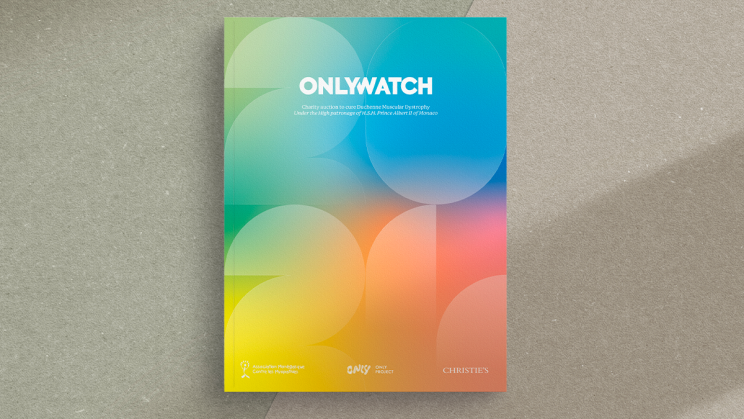Tess Pettavino, Director of the Association Monégasque contre les Myopathies (AMM), manages the charity machine behind Only Watch, and its mission to find a cure for Duchenne Muscular Dystrophy. WorldTempus talks with her about how funds from Only Watch are paving the way towards life-saving therapies for this debilitating genetic disease.
What exactly is Duchenne muscular dystrophy?
It is a genetic disease that affects 1 in 3,500 boys. It is considered a rare genetic disease and affects mainly boys because the gene is located on the X chromosome. Duchenne muscular dystrophy is marked by the absence of the production of a protein that is key to keeping the muscle cells together, so over time, the muscle degrades. Then the key problem is keeping the heart and the respiratory system as healthy and strong as possible as this is what generally leads to premature death. In our case, my brother Paul left us when he was 20 years old, and three weeks ago, another family lost their son at 25.
Can you tell us about how the Association Monégasque contre les Myopathies started?
It was set up in 2001 following the diagnosis of two boys in Monaco at the same time. The parents got together to do everything they could so their children could have the nicest and longest lives possible. During the first few years, they concentrated on organizing round tables and brought in scientific and medical experts in the field to share knowledge. There were some non-watch charity auctions too in the beginning and then Only Watch started in 2005, which provided the funding capacity to start financing research programs.

How are the charity and these research programs structured?
In 2012, there was one lead that was particularly promising to get a “repair message” to the cells in a lasting, yet non-toxic way, so a company was set up at the university of Bern, Switzerland, as an instrument to take this lead to the clinical level. In 2015, the same group of parents and researchers launched a second biotech on the biology aspect of this lead and today we are at the clinical trial stage, which means the molecule is being tested directly with patients. This “first in human” trial is a really big achievement.
What is the next step?
The first phase of the clinical trial started in 2023. We now expect to be allowed to go to the next stage, which is phase two that will focus on the efficacy of the drugs. In the past decade, this project has taken around 90% of the funding allocated by the AMM as it is our flagship project and we are proud of it. Whether it is successful or not, the results of this clinical trial will determine the future of Duchenne muscular dystrophy research.
If all goes to plan, what is the timeline for a drug?
We are always very prudent in the way that we present things because it obviously generates hope for patients and their families. We are hopeful and trusting that the work that is being done is key, but we want to make sure we are careful with the expectations that we create.
Do any of the funds go to other projects?
There is also a sizeable budget for doctoral/post-doctoral grants and research teams studying the mechanisms in DMD and similar diseases, innovation to improve diagnosis, and other leads – some of them could be instrumental in future complimentary clinical developments or simply bring new and important knowledge on genetic diseases.
We are working and growing at the same time. We have grown with the funding capacities that we have had and Only Watch has allowed us to collectively have a tangible impact in the scientific and medical field.

How many people are working on the different research programs?
The biotech that is working on the clinical trial involves about 20 people. In parallel, there are currently 20 other people working on projects running on a grant given by the association, who are operating in hospitals and universities.
Only Watch has raised close to 100 million Swiss Francs, how much of this money has already been spent?
We have allocated 54 million Euros to research over the past years (of which more than half in the past three years – that have been audited) and there are about 55 million remaining. The reason why we have this reserve is that we have to be very careful because we are committed to the clinical trials. We have an important responsibility towards the cohorts of patients and families who have accepted to be part of the trial and who have received injections and who might benefit from it. If we had to say, “I’m sorry, but we don’t have the means to proceed”, it would be immoral. We have to ensure that we can continue for the next three or four years and have the capacity to do everything we have committed to. So, this is a very important component of why we have this reserve. It is also important for us to plan, because we never know how much we are going to raise at any one auction. Another important point is that over two thirds of the sums collected by the association was raised over the last two editions.
If the biotech companies are successful in bringing a drug to market, there could be a lot of money to be made. Where will this money go?
This was one of the questions that was raised last year. For a few years, to benefit from a reduction in social charges, part of the shares of the biotech companies were owned by individuals. All the shares have now been returned and reallocated to associations. Today, the idea is to create an endowment fund that will become the unique shareholder of the biotech companies. The principle of an endowment fund is that once you have put an asset into it, you can never dissociate it from its non-profit mission. The objective for this endowment fund is to continue supporting research into rare genetic diseases as long as we can.
For more information: www.onlyproject.org






